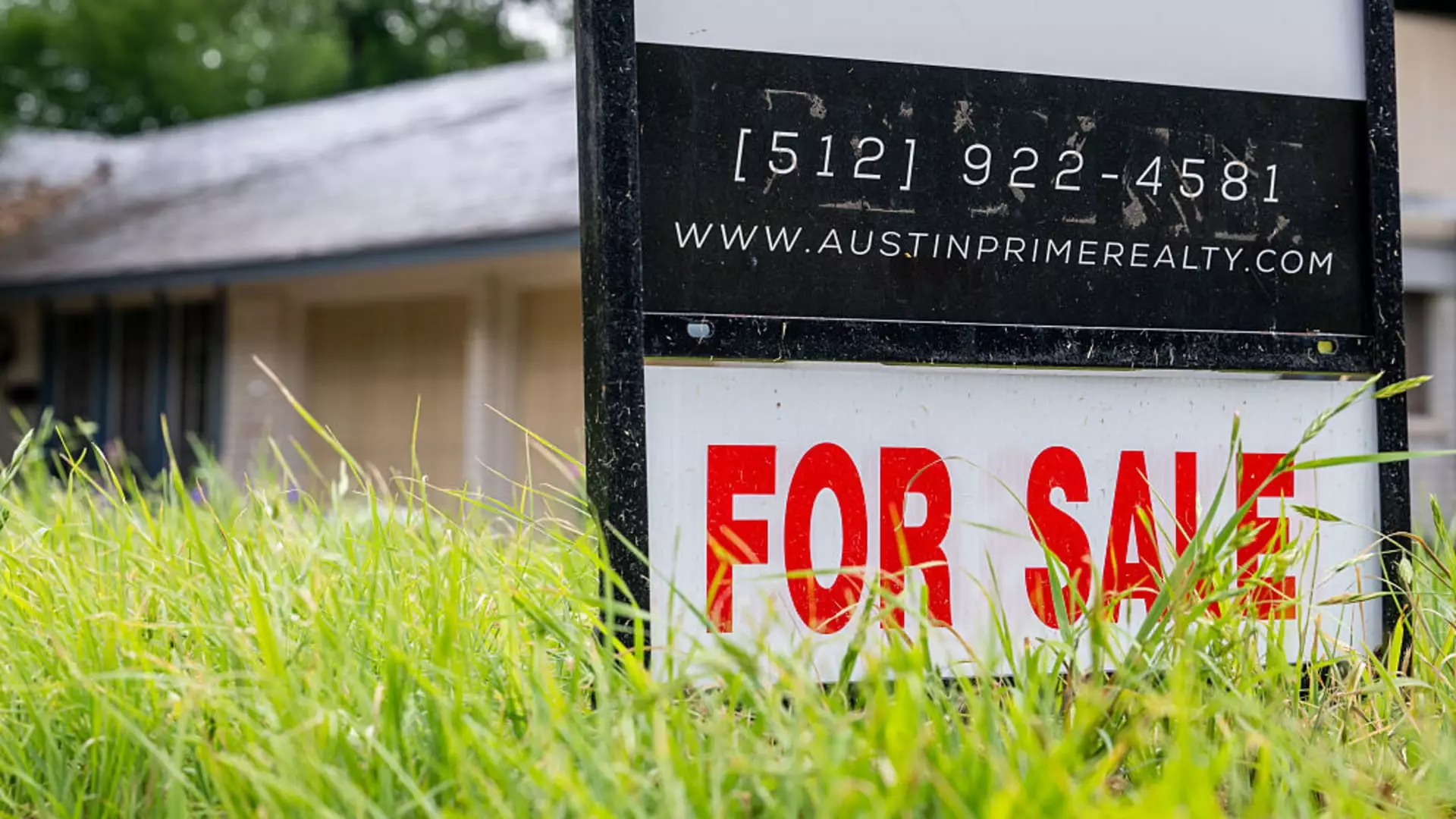Despite the mortgage rates remaining relatively stable, the shadows of economic uncertainty have cast a pall over the housing market. Recent figures reveal a disheartening 4% drop in mortgage applications for home purchases compared to the previous week, as reported by the Mortgage Bankers Association. This decline signals more than just a fleeting moment of hesitation; it reflects an entrenched wariness among potential buyers who are anxiously watching the broader economic landscape. Strikingly, the total volume of mortgage applications is only 3% higher than last year during a period when interest rates were significantly elevated, raising the question: Why are consumers holding back?
The reality is that many potential buyers are caught in a conundrum. Despite average contract rates for 30-year fixed mortgages slightly decreasing to 6.89%, the prevailing sentiment is one of restraint. The fear of a faltering economy and swirling uncertainty is leading to a retreat, not just from mortgages but from the housing market itself.
The Burden of Economic Volatility
Economic pessimism is palpable among both buyers and sellers, and it’s shifting the narrative on mortgage applications. Joel Kan, the vice president and deputy chief economist at MBA, pinpointed the essence of the issue: economic uncertainty and hints of labor market strain are pushing mortgage activities to their slowest rate since February. With rising housing inventory, one would assume that this abundance of options might entice dormant buyers back into the market. However, that has not been the case. Those who were excited about buying their first home now appear paralyzed, unwilling to make significant financial commitments in an unpredictable environment.
This trepidation highlights a key point: consumer sentiment in real estate doesn’t solely hinge on interest rates. Instead, it encompasses a wider array of economic indicators that impact individual confidence, each related to the overarching health of the economy.
Refinancing: A Double-Edged Sword
Interestingly, the refinancing segment is also experiencing a downturn, with applications dropping by another 4%, even as they exceed last year’s numbers by 42%. This paradox signals an unexpected trend: many homeowners are holding their breath, hoping that interest rates will drop significantly before they commit to refinancing. As rates hover near the 7% mark, it’s clear that homeowners are waiting for a more favorable climate before making this financial plunge. This has further led to a decrease in average loan sizes for refinances, suggesting that many borrowers are closely monitoring the market and opting to sit tight.
The intertwining of these factors paints a picture of cautiousness and fiscal responsibility. In a housing market where so much reliance is placed on psychological factors, it seems that the disconnect between the rates themselves and consumer sentiment could pave the way for a prolonged slowdown.
In this climate of uncertainty, confidence could be the missing ingredient. As economic signs remain mixed, mortgage application rates highlight the necessity for a clear vision from policymakers that reassures consumers and fosters a more optimistic outlook towards homeownership.

